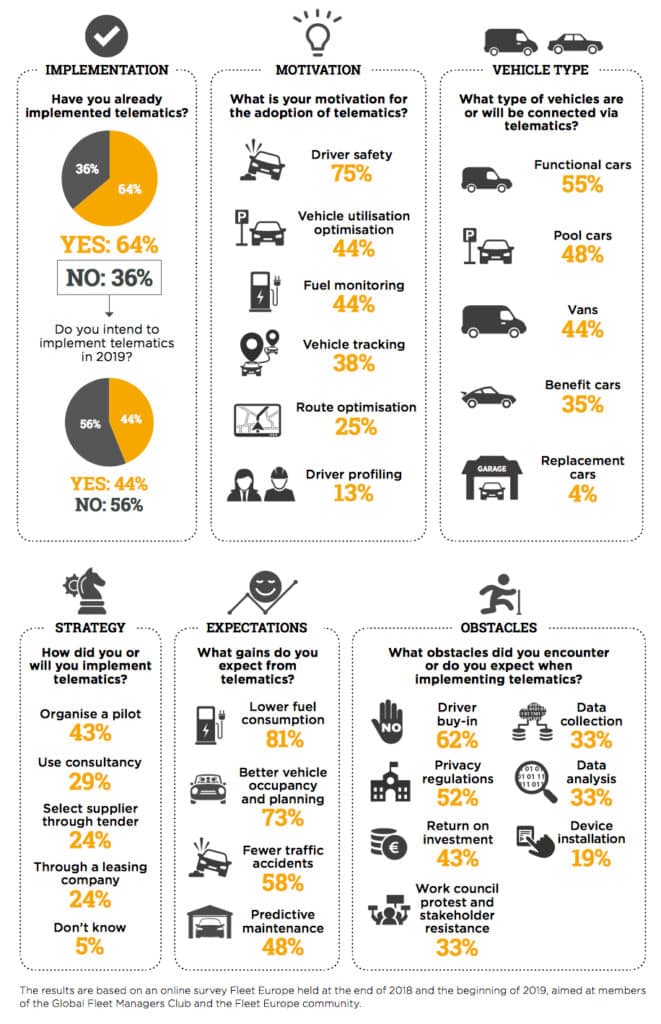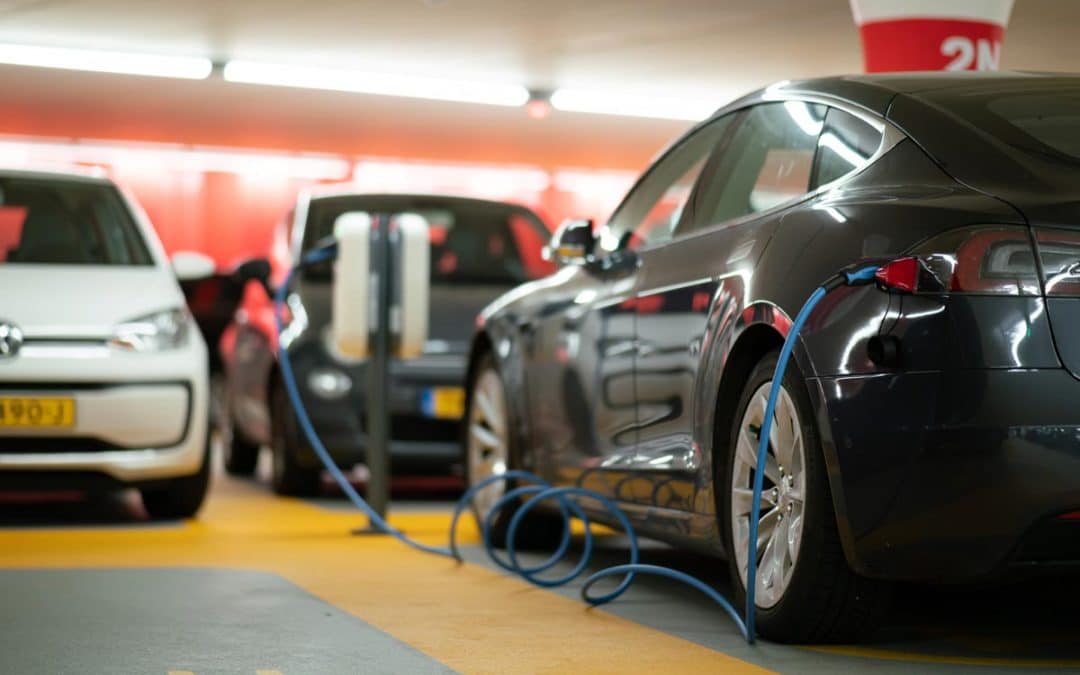These last few years, fleet management definitely entered the digital world and discovered the potential of data. While the volume of corporate fleets is getting bigger, fleet managers search optimization tools to help them reduce their mobility budget while offering a qualitative service to their employees. But unfortunately the implementation of telematic of solutions is not yet an automatism!
Telematics (noun): the branch of information technology which deals with the long-distance transmission of computerized information.
Telematics do not only cover vehicles tracking or fuel management anymore. The range of possible applications got significantly more important recently. And data relative to vehicles uses that can be analyzed by companies are far more numerous than before.
The main motivation for adopting telematics in corporate fleets? An improvement of driver safety. That’s what the online survey held by Fleet Europe at the end of 2018 and at the beginning of 2019 reveals. This poll aimed the members of the Global Fleet Managers Club and the Fleet Europe community.
Gathering data and analyzing the driving habits of the employees helps improving safety conditions at work while ensuring to the fleet managers less road accidents with their service vehicles. It can be translated with the launch of awareness campaigns to make driving habits more sustainable. Gamification can also be an ideal way to improve user experience, in a playful yet effective way.
“The automotive telematics european market should represent a sales revenue of 40.57 billions euros by 2021, with an annual growth rate of 21.7%.”
For 64% of respondants who already implemented telematics in their fleet management, the other reasons are mostly operational and financial.
With 44% of the answers, the optimization of the use’s rate of the vehicles is a priority for companies. Facing oversized corporate fleets that don’t match the mobility needs of their employees, fleet managers can rely on the rise of connected vehicles and the access to a variety of data in real-time to adjust the size of the fleet. All of this allowing them to save on their budget while offering to their employees a similar or even superior mobility service.
By using telematics, the fleet manager can…

Reduce the fuel consumption and propose a more sustainable mobility

Analyze the use data to improve the driving habits of the employees

Observe the mobility habits to offer services corresponding to actual needs

Optimize the use rate of the vehicles and thus reduce the Total Cost of Ownership

Plan vehicles maintenances in advance by detecting anomalies and breakdowns
Tomorrow? Telematics will go even further
In a not so distant future, new vehicles models will be connected. The part of companies specialized in telematics will not no diminished, rather the opposite. Why? Because collecting and analyzing data are two very distinct things.
The acceleration of connectivity in the automotive market and even more the democratization of autonomous technologies will make the quantity of data produced by vehicles more important. All of this will complexify the task of the fleet manager: he will have to distinguish in this mass of informations the data relevant to the optimization of his fleet.
Companies specialized in telematics and data analysis already work on specific tools to answer these problematics. The goal is simple: to translate in the easiest way possible the collected informations to help fleet managers in their everyday tasks.
As for artificial intelligence, the capacity of the “smart” vehicles to collect data in real time will give the possibility to map the surrounding environment and thus propose to users the safest routes.

When receiving the collected data, the system will be able to react almost immediately. For instance, in the case of a carsharing service, the system will be able to detect anomalies on a vehicle and then automatically switch all the reservations on another available vehicle. From the fleet manager side, this artificial intelligence will enable the possibility to do predictive maintenance thanks to use datas.
To be relevant, companies will have to transform all these data to offer to their customers decision-making tools that can help them optimize the use rates of their vehicles. All of that while being in conformity with the numerous regulations relative to cybersecurity and the right of privacy.
DU BON USAGE DES DONNÉES
According to Frost and Sullivan, a relevant use of data collected with telematics tools can have many benefits for fleet managers:
- Increase productivity by 10-15%
- Save 20 and 30 minutes minutes labour time per driver per day
- Reduce overtime by 10-15%
- Cut fuel expenses by 20-25%
- Reduce vehicle idle time by 20-30%
- Boost vehicle utilisation by 15-20%
- Cut total miles driven by 5-10%
The expected time to ROI can be as little as six to eight months.
TELEMATICS: AN IDEAL ENTRY POINT TO CARSHARING
Telematics, as onboard equipments, make the access to self-service vehicles possible. A mobility model that we can see more and more frequently in companies and collectivities in Europe.
From bike-sharing, to carsharing, and even micro-mobility services in free floating, vehicles (whether they have 2 or 4 wheels!) are shared among employees, thus mutualizing mobility ressources within the entity.
In a corporate setting, it has many benefits.
Telematics make possible the implementation of shared mobility services that can benefit the well-being of the employees as well as the fleet manager budget. Instead of owning a vehicle, we prefer to share one!
The e-Colibri™ corporate carsharing solution developed by Mobility Tech Green takes full part in this change of paradigm. Including a management back office and an online booking platform, it also demonstrates our hardware expertise in order to propose a complete self-service mobility offer.
A very concrete application of telematics to make your everyday fleet management easier!













0 Comments